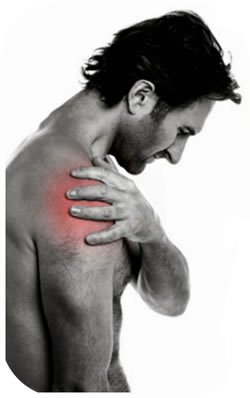Rotator Cuff Tendonitis and Impingement
 This happens when the rotator cuff and the scapula rub together. The pain is mostly felt when the arms are lifted in an upward position. Some dancers reading this might be asking themselves “when am I not lifting my arms?” This is ultimately a great question. Obviously it is a necessity for dancers to have adequate use of their arms. There is rarely a genre of dance that does not include moving and having overall uninterrupted use of one’s upper limbs. This is why it is of utmost importance for a dancer to proactively lookout for strains to their rotator cuff tendon; it is not a pain to be taken lightly. Dancers frequently acquire this impairment from overuse, as most all forms of dance require extensive use of the arms. It is hard to imagine a dancer not having proper use of their arms and it goes without saying how this can impact a dancer’s career and even daily routine. A dancer uses their arms not only for expression and technique, but also for balance and symmetry. It’s important for dancers to keep in mind how these two parts of the body (the rotator cuff and the scapula) operate and work together. Proper technique is something that is learned through years of dance training. The way we move, place, lift, rotate and direct our arms is one of the first lines of defense in preventing these types of injuries. It is unlikely that a dancer can injure this area through proper movement, but it is possible. Accidents happen, and when they do it can be disastrous in the long run. Take time to remember technique, and the basic idea of taking it “slow at first.” If the same routine is giving you aches and pains after rehearsals, try going slow, and steadily increase to desired rhythm or pace. Use your practice time to perfect your technique as well as your routine and it will prepare you for that performance day without the inhibiting factor of an injury.
This happens when the rotator cuff and the scapula rub together. The pain is mostly felt when the arms are lifted in an upward position. Some dancers reading this might be asking themselves “when am I not lifting my arms?” This is ultimately a great question. Obviously it is a necessity for dancers to have adequate use of their arms. There is rarely a genre of dance that does not include moving and having overall uninterrupted use of one’s upper limbs. This is why it is of utmost importance for a dancer to proactively lookout for strains to their rotator cuff tendon; it is not a pain to be taken lightly. Dancers frequently acquire this impairment from overuse, as most all forms of dance require extensive use of the arms. It is hard to imagine a dancer not having proper use of their arms and it goes without saying how this can impact a dancer’s career and even daily routine. A dancer uses their arms not only for expression and technique, but also for balance and symmetry. It’s important for dancers to keep in mind how these two parts of the body (the rotator cuff and the scapula) operate and work together. Proper technique is something that is learned through years of dance training. The way we move, place, lift, rotate and direct our arms is one of the first lines of defense in preventing these types of injuries. It is unlikely that a dancer can injure this area through proper movement, but it is possible. Accidents happen, and when they do it can be disastrous in the long run. Take time to remember technique, and the basic idea of taking it “slow at first.” If the same routine is giving you aches and pains after rehearsals, try going slow, and steadily increase to desired rhythm or pace. Use your practice time to perfect your technique as well as your routine and it will prepare you for that performance day without the inhibiting factor of an injury.

